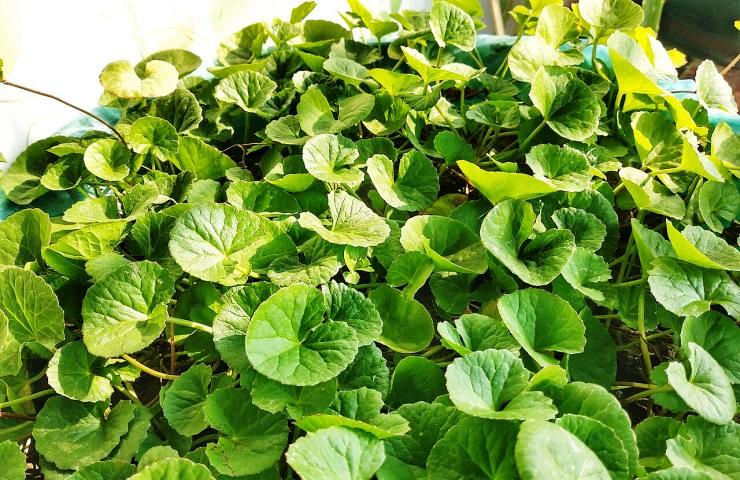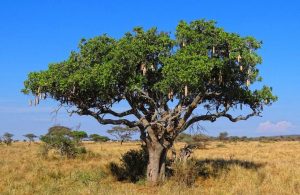It is one of the most unique medicinal plants that has been in use since prehistoric times. It continues to draw worldwide attention for its roles in the treatment of mild and chronic diseases.
It is a perennial, slender, creeping herb found mostly in damp areas up to an altitude of about 1800m. It has small, simple, green leaves which are fan-shaped with light purple-to-pink or white flowers which develop into small oval fruits. The plant is commonly referred to as ‘Gotu kola’, pennywort or wild violet.
It is found in most tropical and subtropical countries growing in swampy areas, including parts of India, Pakistan, Sri Lanka, sub-Saharan Africa, the South Pacific and Eastern Europe. About 20 species related to Centella asiatica grow in most parts of the tropics. It is a tasteless, odourless plant that thrives in and around water. The whole plant is used for traditional medicine purposes.
The Centella asiatica plant has been used in the treatment of numerous diseases for thousands of years and continues to draw worldwide attention for its roles in the treatment of both mild and chronic diseases.
Traditional medical practitioners have used Centella asiatica over the years to treat leprosy, eczema, psoriasis, respiratory infections, ulcers, colds, hepatitis, epilepsy, fatigue, fevers, asthma and syphilis, minor burns, scars, scleroderma, skin ulcers, varicose veins, wound healing, rheumatism, blood diseases, congestive heart failure, urinary tract infections, venereal diseases, hepatitis and high blood pressure, phlebitis, and leg cramps, among others.
The use of Centella asiatica in the treatment of leprosy was reported for the first time around 1852 in Mauritius. The plant decoction is administered topically or orally to treat the leprosy disease condition and in addition, heals the sores associated with leprosy. The plant is widely used as a blood purifier as well as for treating high blood pressure. It is also used to enhance memory and, in some communities, it’s believed that regular taking of the plant decoction or regular eating of the leaves as salads promotes longevity.
Traditional healers use Centella asiatica as one of the main herbs for revitalizing the nerves and brain cells and in treating mental illnesses, such as depression and also other diseases including eczema, psoriasis, lupus and female disorders. The plant has been used in traditional medicine in many communities for wound-healing purposes. In this, the powdered leaves are topically applied to the wound to enhance its healing and also to prevent microbial infections.
Centella asiatica has been used to reduce body swellings and improve circulation in individuals with venous complications such as varicose veins (veins that have become enlarged) and venous insufficiency, a condition that causes blood to pool in the legs.
The plant has also been significantly used in the treatment and management of ankle edema, body pain, cramps and tiredness. In some communities, the herbalists prescribe the herb for the treatment and management of insomnia, scleroderma, cancer, circulatory disorders, hypertension, scars and cellulite. In fact, due to its great importance in community healthcare, Centella asiatica is also known as the ‘fountain of life’ herb because it supposedly increases longevity and is highly valued as one of the most important rejuvenating herbs due to its excellent ability to reverse the signs of ageing.
The Centella asiatica decoction is used to relieve high blood pressure and also to cleanse the body of toxins. It is used to treat rheumatism, urinary tract infections, hepatitis and high blood pressure. The dry powder of Centella asiatica is applied on patients’ burns to enhance faster healing.
Daily application is known not only to quicken healing but also can limit the skin shrinking on the affected area as it heals. In addition, the plant is also known to prevent infection and inhibit scar formation on the affected body parts.
The plant has also been used to treat syphilis, dysentery, leprosy, tuberculosis and skin lesions. The plant decoction has also been administered for the treatment of diarrhoea and fevers, and amenorrhea. Centella asiatica is highly valued for its use as an aphrodisiac; an agent that stimulates sexual desire and ability in both males and females. In this case, the leaves are crushed and consumed as salads on a regular basis to obtain the desired result.
Apart from its medicinal uses, Centella asiatica is also eaten as a vegetable or used as a spice in many communities. The leaves are used in salads and eaten raw or the mashed leaves are added to rice. The leaf extracts can also be added to drinks.
These incredible uses and in particular the medicinal benefits of Centella asiatica is attributed to phytochemical triterpenes asiatic acid and madecassic acid, and their derived triterpene ester glycosides, asiaticoside and madecassoside that are found in it. Indeed, Centella asiatica is one of the most significant herbs used across the continent of Africa. (Richard Komakech) – (Photo: CC BY-SA 4.0/ Shahidul Hasan Roman)







